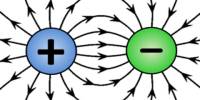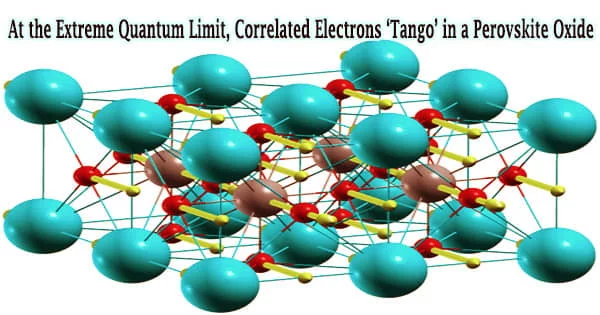Due to its potential importance in the development of new technologies, the so-called superconducting (SC) diode effect has recently received considerable attention within the physics research community. Since the materials hosting this effect are effectively superconducting in one direction of current flow and resistant in the other, it serves as a major illustration of nonreciprocal superconductivity.
Massachusetts Institute of Technology (MIT) scientists working with IBM Research Europe and other institutions across the world recently discovered this intriguing phenomenon.
Their findings, presented in Physical Review Letters, could enable the fabrication of new electronic components, such as better-performing diodes (i.e., devices that allow electrical current to flow in a specific direction).
“Our discovery of a SC diode effect was in a way serendipitous, while equally surprising,” Jagadeesh Moodera, one of the researchers who carried out the study, told Phys.org. “We were (and are still) studying the elusive Majorana bound states, also known as Majorana fermions, which appear on a superconducting gold surface using a similar thin film stack structure. We took a detour for a ‘quick’ search of the phenomenon (superconductive diode effect) that was suddenly gathering limelight, with several new reports on this subject appearing since 2020.”
After only a few days of research, Moodera and his team were able to successfully observe the SC diode effect in thin superconducting films. Initially, they concentrated on observing the effect under situations that were known to be advantageous, particularly when the superconductors were exposed to exchange and spin-orbit fields. However, they soon realized that the effect was ubiquitous in superconducting layers, meaning that it occurred either way, even without these fields.
“It turned out that record diode behavior in a superconductor could be realized with simple sculpting of its edges, and thus forming the basis for future easy scaling up of efficient superconducting memory, switch, logic etc., device technology,” Moodera explained. “It is noteworthy to point out that two high school juniors who conducted research at MIT over the summer, namely Amith Verambally and Ourania Glezakou-Ebert, were instrumental to this study. This work further emphasizes that breakthrough research happens when least expected, when free to explore, with open mind!”
Our discovery of a SC diode effect was in a way serendipitous, while equally surprising. We were (and are still) studying the elusive Majorana bound states, also known as Majorana fermions, which appear on a superconducting gold surface using a similar thin film stack structure. We took a detour for a ‘quick’ search of the phenomenon (superconductive diode effect) that was suddenly gathering limelight, with several new reports on this subject appearing since 2020.
Jagadeesh Moodera
Superconductors are materials that become superconducting (i.e., they can conduct direct current without losing energy) when cooled down to sufficiently low temperatures. In other words, up to a certain value known as critical current, these materials host dissipation-free electric current that flows through them with zero resistance.
When the SC diode effect occurs, this critical current becomes different based on its direction (i.e., on whether it is flowing forward or backward within the material). The key objective of the researchers’ study was to probe this effect in thin layers of superconducting materials.
“We fabricated high-quality SC films with a ferromagnetic semiconductor layer over it, and measuring the transport current characteristics found huge SC diode effect without the need for an applied magnetic field,” Akashdeep Kamra and Yasen Hou explained. “We realized that the fine geometrical details of sides in our lithographically patterned film strips were playing the crucial role in this diode effect. So, we synthesized even simply the SC film and introduced inhomogeneity on one of the sides, creating further asymmetry, to enhance the SC diode effect.”
It’s interesting to note that the materials used in the edge inhomogeneity tuning study were mostly created by two high school students participating in an MIT summer program, under the guidance of Hou and Moodera. Their creative designs greatly contributed to the team’s observation of further enhanced SC diode effect.
“In the past couple of years there have been several reports of the superconducting diode effect on fairly complex multilayer systems, with interpretations that are mostly based on the notion of finite momentum Cooper pairing,” Patrick Lee said. “The ingredients are magnetic field or magnetization and spin orbit interaction to engineer an unconventional SC film. One relatively simple set-up is to sandwich a SC film between a ferromagnet layer to give the magnetization and a heavy metal such as Pt to provide spin orbit coupling. We were interested in testing this proposal.”
As they had predicted, Moodera, Hou, Kamra, Lee and their colleagues observed the SC diode effects in the sandwich-like structures they had carefully created. They next produced control thin superconducting samples, which they anticipated would not exhibit this effect, in order to ascertain whether this sandwich-like design was essential to permitting the result. However, to their great astonishment, these control samples displayed a similarly potent SC diode effect.
“We found that neither the heavy metal Pt nor the exchange coupling between the ferromagnet and the SC is necessary: the effect is driven by the fringing field at the edge of the ferromagnet,” Lee explained. “Eventually we found that we can eliminate the ferromagnet entirely, and a single SC film subject to a very small perpendicular field exhibits the diode effect. The origin of this effect has to do with vortex pinning near the edge. Once we understood that, we purposely created a jagged edge on one side of the film and observed a very large diode effect.”
To better understand their observations, the researchers then reviewed previous literature on this topic. They found that while past studies discussed some of the basic physics underlying the SC diode effect, they often did so in an unorganized and dispersive way.
“These papers have escaped the attention of the recent flurry of papers on the subject,” Lee said. “So, in addition to producing record breaking diode effects in a very simple way, we also place the recent work in the right context. Any claim of a new effect thus should undertake the exercise of eliminating the ‘ubiquitous’ features that we found.”
This team of academics’ most recent work successfully pinpoints the physics underlying the SC diode effect in thin SC films and demonstrates that it is not the product of a different kind of Cooper pairing process.
In contrast, it suggests that the SC diode effect is very easy to realize and is linked to the basic inherent properties of SC materials, which have been known for decades.
In the future, the findings gathered by Moodera, Hou, Kamra, Lee and their colleagues could enable the development of new and highly performing SC diodes. These diodes may not only be based on thin materials, making it simpler to scale them down in size, but they may also be simple to make and extremely efficient.
“In our work, we were unable to identify and understand the mechanism for the emergence of SC diode effect when magnetic field is applied along the current flow direction,” Kamra, Hou, Lee and Moodera added. “This remains an intriguing and outstanding challenge to us and the scientific community. We would like to figure this out in the future.”
“At the same time, from a device perspective, we would like to determine the temperature and frequency dependence of the SC diode effect so that this could be extended to higher temperature superconductors besides to envisioning robust and fast computing.”
















